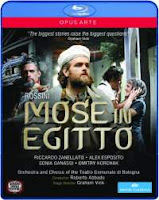It has been awhile since a thriller has graced the Rialto, so I reached out to theatrical works past for murders committed on stage.
The Mousetrap by Agatha Christie premiered in 1952.
Sleuth by Anthony Shaffer premiered in 1970.
Deathtrap by Ira Levin premiered in 1978.
Getting Away with Murder by Stephen Sondheim and George Furth premiered in 1996.
THE WORKS
Locked room whodunnit
In manor. Nods at self and
Plays up shuffling roles.
Sleuth by Anthony Shaffer premiered in 1970.
Ex invites wife's new
Beau. To kill? Play with? Twists tire.
What is partnership?
Deathtrap by Ira Levin premiered in 1978.
Meta thriller: old
Author invites new. To kill?
Collaborate with?
Getting Away with Murder by Stephen Sondheim and George Furth premiered in 1996.
Plods, mechanical.
Murder in group therapy.
Power is a sin.
NOTES
SETTING
"The Mousetrap" - Great Hall of Monkswell Manor, snowbound
"Sleuth" - A manor house in Wiltshire
"Deathtrap" - A house in the woods in Westport Connecticut
"Getting Away with Murder" - A psychiatrist's office
The more isolated the setting the better - as in "The Mousetrap" and "Deathtrap." One reason "Getting Away with Murder" does not work is because it relies on too many contrivances to isolate a group in an urban setting: elevators (one shaft conveniently out of order), key restrictions to the bathroom and the office.
LIGHTS OFF / ON
"The Mousetrap" set the cliche for murders during blackouts, a staple of murder-mystery weekends. (See "The Golden Girls" Season 7 Episode 1: "The Case of the Libertine Belle.) In the latter works, the murders take place in full view onstage. Christie's play is a whodunnit and the rest are whydunnits.
META
"The Mousetrap" still holds up and "Deathtrap" even more so. They are meta-thrillers. Near the end of the first act in "The Mousetrap" Mr. Paravicini acknowledges the play's contrivance after the last character arrives at the manor.
"Deathtrap" is a play that revolves around a play called "Deathrap" - a thriller in two acts with 5 characters. The characters self-reference the actions that the audience sees. It's like having the lights turned on the whole time, making the twists more surprising.
Part of the reason why I like "Deathtrap" is because it summoned Marian Seldes' spirit. She played Myra Bruhl and appeared in all 1,793 performances (or 1,809 depending on your source) of "Deathtrap." That's 5 years of perfect attendance, a feat she modestly cut down during an interview in Theater Talk saying, "I wasn't really in the play for 5 years. I was in the play for sort of two and a half."












